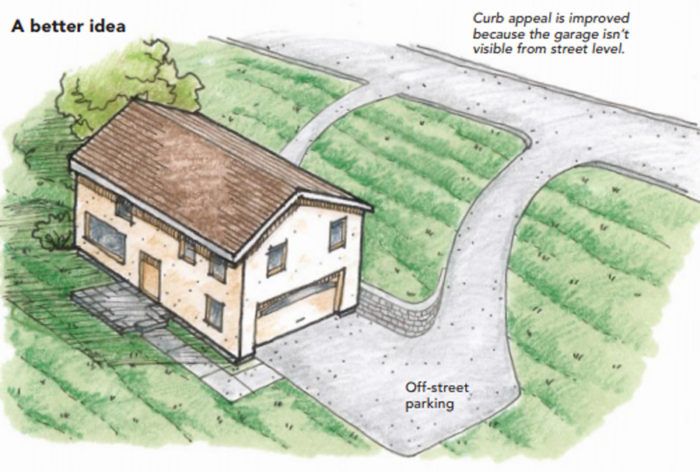There’s No Such Thing as a Perfect Building Site
An architect offers smart strategies to fix imperfect situations.

Synopsis: The only building sites left are those that are problematic in some way: a featureless lot in a development, a downslope lot that tumbles away from the edge of the road, or a lot that’s restricted by setbacks and zoning. If you examine a site closely and plan to surmount its shortcomings, then you can end up with a better house. Boston architect and book author Jeremiah Eck explains how in this article.
Of all the principles that govern house design, siting is the most underrated and most often ignored. You may have a functional plan or a pleasing, well-proportioned exterior, but those attributes won’t be quite so evident if your house isn’t sited properly. To my mind, the sprawling quality of most houses built today would be less offensive if a few simple siting principles were considered more thoughtfully. This is true for almost any piece of land, whether a quarter-acre lot in a subdivision or a spectacular site along the seashore.
Siting is also increasingly important because in most towns, the good sites are long gone. The only sites left are those that are problematic in some way: a featureless lot in a development, a downslope lot that tumbles away from the edge of the road, or a lot that’s restricted by setbacks and zoning. If you examine a site closely and plan to surmount its shortcomings, then you can end up with a better house.
Invest in the process of discovery
I advise everyone to research a building site as they would a good Wall Street stock. Start by collecting all the external data, such as site boundaries, topography, weather, and restrictions. I walk the site at different times of the day and at different times of the year to see what’s nearby. I always carry a compass to determine where south is, to figure out where the sun rises and sets, and to see how the sun tracks across the sky. Bear in mind that the winter view is very different from the summer. To get a better view of the topography, I bring a stepladder or climb a tree that approximates the height of a house’s first floor.
I also look for good views. When you’re in a house, you need a relationship to the outside, something that draws you to the window from time to time. All sites have a vista of some kind: a little meadow, a swale in a distant hill, a grouping of trees. My job is to find that view and make the house take advantage of it. I take notes about the site’s vegetation and look for any large trees that I might want to save.
Finally, don’t ignore the wisdom of those who may have built before you. When I was just starting out, I spent a day with a landscape architect, dragging a 9-ft.-tall viewing platform around the site of an abandoned farm, looking for the best place to build a new house. As the sun was setting, we discovered the one spot where the views, the solar orientation, and the topography all came together. It was, of course, right in the middle of the farmhouse’s ruined foundation.
For more photos and details on how to build on a troublesome site, click the View PDF button below.
Fine Homebuilding Recommended Products
Fine Homebuilding receives a commission for items purchased through links on this site, including Amazon Associates and other affiliate advertising programs.

Code Check 10th Edition: An Illustrated Guide to Building a Safe House

Smart String Line

Original Speed Square

























